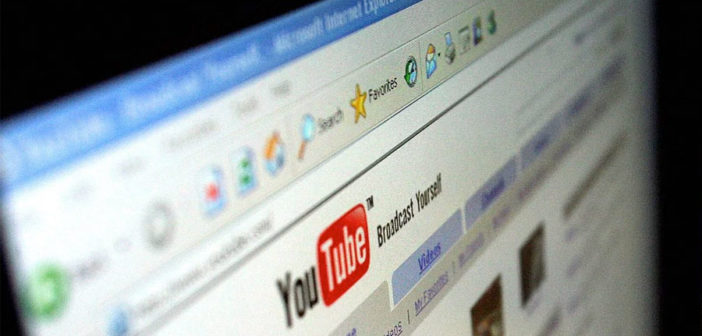Top ad-buying firms sign on for auditing services to make sure ads steer clear of controversial content
Ad-buying giants like Omnicom Media Group OMC 0.70% and Publicis Media are signing on to use an auditing service from video analytics firm OpenSlate, as agencies try to reassure marketers that their ads on YouTube are appearing alongside content that’s safe for their brands.
Magna Global and Horizon Media are also among the ad companies enlisting the help of OpenSlate, which can provide a deep analysis to ensure clients are getting what they pay for when they buy ads on YouTube, such as reaching the right target audience.
Earlier this year, many big brands suspended their ad spending on YouTube and Google amid evidence that some ads were appearing alongside objectionable content, such as videos promoting terrorism or anti-Semitism. That recent controversy has fueled demand for more granular information on where ads appear on Google’s wildly popular video site.
Over the past few months, YouTube has taken steps to assuage marketers’ concerns, including improving the technology it uses to screen videos and allowing third-party measurement companies to monitor where ads appear on the site.
As marketers return to the platform, agencies and brands are now embracing independent measurement firms that can help them get a more comprehensive analysis of where their ads are running, including a full list of videos against which their ads appeared and details about the content of the videos.
The crisis “shined a light on the need to look deeper at where we are running,” said Jon Anselmo, president of Omnicom Media Group, which is a unit of Omnicom Group Inc.
Magna Global, the ad-buying arm of Interpublic Group of Cos., said it signed on with OpenSlate so it can offer its clients more assurances that their ads won’t appear alongside controversial content.
The agency, which buys on behalf of marketers such as Johnson & Johnson and Coca-Cola, is also recommending to clients who are very concerned about brand safety that they should limit their ad buys on YouTube to 10,000 pre-vetted channels that Magna and OpenSlate have audited and deemed acceptable.
“Our recommendation is to have the greatest amount of safety,” said David Cohen, Magna’s president of North America.
Getting a clear view isn’t easy since there are more than 350 million ad-supported videos on YouTube and the average $100,000 campaign can entail having ads running on at least 200,000 different videos, OpenSlate said.
“As part of our commitment to provide even more transparency and visibility to our advertising partners, we’ve been working with trusted vendors to provide 3rd party brand safety reporting on YouTube,” said a spokeswoman for Google. “We are working with companies that are MRC-accredited for ad verification on this initiative and will begin integrating these technologies shortly.”
OpenSlate’s data scores YouTube content for quality and brand safety, and provides advertisers with more insights on where their ads appear. Advertisers can use the service to define the types of content that they want to be included on their media buys, known as whitelisting. It also is able to provide agencies and marketers with reports that show exactly what videos their ads have run on and data about the videos such as what type of content the video consists of, whether it’s brand safe, and who created the video.
“Our tools are about bringing more transparency” to the online video ad space, said Mike Henry, OpenSlate’s chief executive officer. The company said it has audited 152 YouTube ad campaigns for 65 brands since March. The company expects to audit more than 250 campaigns in the fourth quarter.
Some agencies and marketers had been using OpenSlate and other measurement companies on an ad hoc basis prior to the brand safety imbroglio to get some information, such as audience demographics, about different YouTube channels. OpenSlate got that information from YouTube creators directly.
But the flare-up caused many firms to become increasingly leery of the performance of digital ads and to use these services as YouTube opens up to third-party measurement. GroupM, the WPP-owned ad-buying unit, signed a wide-reaching agreement with OpenSlate in March, at the height of the controversy.
“Clients are now taking a closer look to not only make sure it’s in brand-safe environments but it’s actually the environments that are synergistic with their messages,” said Mr. Cohen at Magna.
Horizon, a media buying firm that works on behalf of brands such as Geico and Corona, said firms such as OpenSlate are also helping the agency make sure the ads they buy are actually reaching the right target audience.
The brand safety issues “has illuminated some of the delivery challenges that exist,” said Sarah Baehr, an executive vice president of digital investment at Horizon Media.
Indeed, Ms. Baehr said OpenSlate has helped the agency find some “inconsistencies” with its ad buys, such as ads appearing alongside YouTube videos that are in a foreign language or that aren’t reaching the right target audience.
Ms. Baehr said that for brands whose ads didn’t reach the intended audience, it has received free ad inventory known as “make-goods.”
“It’s really about ‘Am I getting what I thought I was getting?’ and not just ‘Am I running on hate sites?’” she added.
–
This article first appeared in www.wsj.com
Seeking to build and grow your brand using the force of consumer insight, strategic foresight, creative disruption and technology prowess? Talk to us at +9714 3867728 or mail: info@groupisd.com or visit www.groupisd.com



